Beef Loin Flap Where Part Cow Vacio
Look up Argentina in the dictionary and the definition says, ʻsynonym of meatʼ. Okay, thatʼs not true. But it should be, because this country is all about the carne. Give or take a few steaks, Argentineans eat about 55kg of beef each a year. Thatʼs almost double what North Americans put away. You soon get used to the smell of grilled beef that wafts from parrillas (steak restaurants) dotted on every corner and itʼs not unusual to see builders and shop keepers lovingly labouring over their make-shift grills during lunch breaks. Sundayʼs here remain sacred too, as families get together for asados (BBQʼs) and feast the afternoon away with a bottle of Malbec and charla (chat). Beef here is a source of national pride and after tasting your first fork full, youʼll see why.
The flat, central plains of Las Pampas are home to Argentinaʼs prized, grass-fed cattle. This said grass results in leaner cuts than corn-reared breeds and the meat isnʼt aged. Some places may let it rest for up to two weeks, but itʼs generally not hung. The cows are cut differently too, meaning names might not be what youʼre used to, plus theyʼre in Spanish. Either way, to the untrained beef lover, decoding the parrilla menú can leave you more than a bit bamboozled. So The Real Argentina is here to guide you through what can be an intimidating overload of dead cow. The list below includes choice cuts as well as other more daring bits – offal and all – that you may or may not have the pelotas to try. But hey! Youʼre in Argentina, so get ready to loosen your belt, eat a steak the size of your head and fall straight into carne coma heaven.
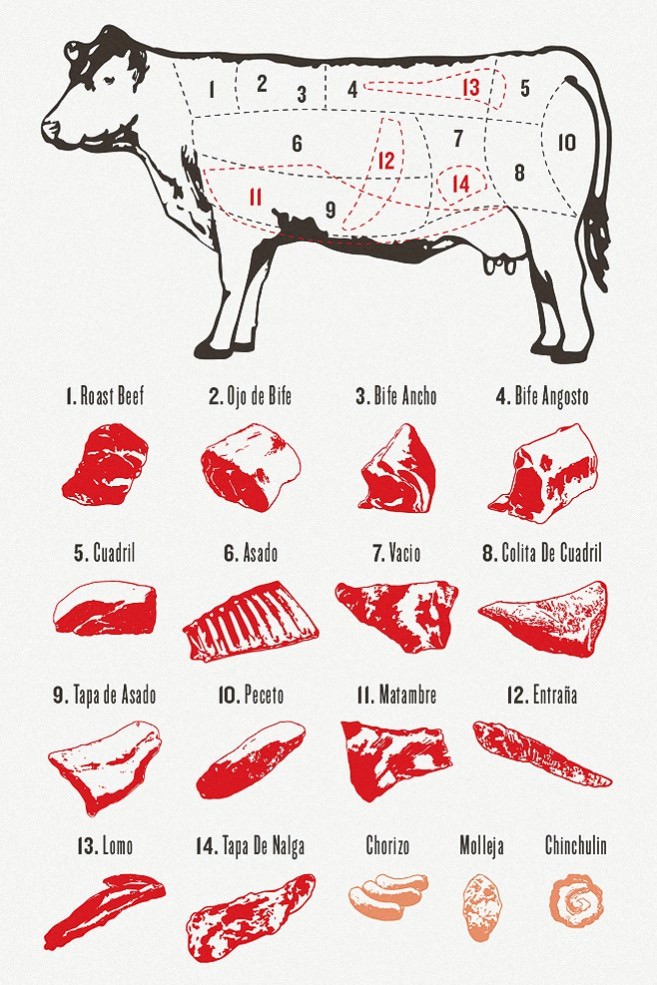
Illustration courtesy of Big Iron.
THE CUTS
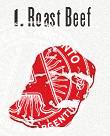 1. Roast Beef / err…Roast Beef
1. Roast Beef / err…Roast Beef
A cheaper cut taken from the neck, it's best drowned in a tasty sauce and is often used for mince.
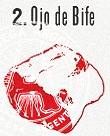 2. Ojo de Bife / Rib Eye
2. Ojo de Bife / Rib Eye
A familiar friend full of marbling fat which gives it tons of flavour. It's a whacking great big chunky steak and comes from the best cut of the rib section. A personal fave.
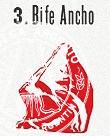 3. Bife Ancho / Prime Rib or Rib Eye Roast
3. Bife Ancho / Prime Rib or Rib Eye Roast
Akin to Ojo de Bife, ancho steaks are cut from the rib-eye roll. You can get it boneless or bone-in, which packs more flavour into an already tender, tasty and marbled cut.
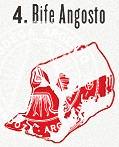 4. Bife Angosto A.K.A Bife de Chorizo / Sirloin or New York Strip (U.S.)
4. Bife Angosto A.K.A Bife de Chorizo / Sirloin or New York Strip (U.S.)
One of the best go-to steaks for taste and quality, it's probably what more than one mozo (waiter) will steer you towards. Proper carnivore bliss, it comes with a satisfying edge of fat and is usually served in portions huge enough to share. Beware, cheap cuts will have an indecent amount of fat on them.
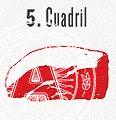 5. Cuadril / Rump Steak
5. Cuadril / Rump Steak
Used for everyday cooking in Argentina, the classic rump is nothing to write home about but is nevertheless a thick, meaty cut of reasonable quality. And you get a lot of it for your pesos. If you end up extending your trip, this is one to cook up at home.
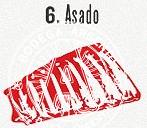 6. Asado / Short Ribs or Spare Ribs
6. Asado / Short Ribs or Spare Ribs
So this is confusing. Asado is the name for BBQ in Argentina but it also refers to the large section of the rib cage that produces the finger-lickin' tasty morsels of short or spare ribs. You want them a bit crispy on the outside to contrast with the tender meat inside. Pure salty goodness.
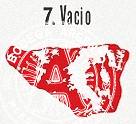 7. Vacio / Flank
7. Vacio / Flank
Delicious and often overlooked flank from around the belly of the cow. You don't normally see this outside of Argentina, so take advantage of this best-cooked slowly strip which delivers on flavour and has an addictive crispy fat, smothering the exterior.
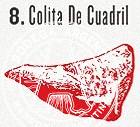 8. Colita de Cuadril / Tri-Tip or Sirloin Roast
8. Colita de Cuadril / Tri-Tip or Sirloin Roast
Often roasted but also grilled-up and minced. A cheaper cut and versatile enough to smother a marinade over, which it soaks up like a thirsty campesino (countryman). Not memorable enough to order out.
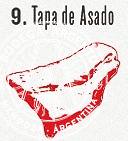 9. Tapa de Asado / Rib Cap
9. Tapa de Asado / Rib Cap
Falling somewhere in flavour between bife de chorizo and ojo de bife, this is their not so meaty nor buttery hermano. It has to be medium-rare pink. It's too tough past that point but isn't the tenderest choice to start with. One for the asado en casa.
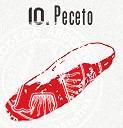 10. Peceto / Eye of Round
10. Peceto / Eye of Round
Best roasted rare, this super lean slice is super economical. Coming from the well used Round Primal muscle, this cut will give your molars a work-out.
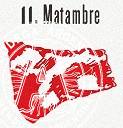 11. Matambre / Flank Steak
11. Matambre / Flank Steak
A mash-up of the words 'matar' and 'hambre' ('kill-hunger'), a very thin cut taken from between the skin and the ribs. It's served as a steak but much more common as 'matambre relleno', a meat roll stuffed with a variation of carrots, peppers and hard-boiled eggs depending on the province.
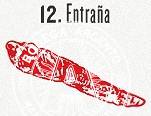 12. Entraña / Skirt Steak
12. Entraña / Skirt Steak
Rich and juicy this cheaper cut is a good bet if you've got time to branch out from the usual cuts. It can need a bit of chew if overdone.
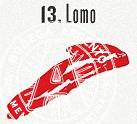 13. Lomo / Fillet or Tenderloin
13. Lomo / Fillet or Tenderloin
This famed cut is the fine dining of steak and comes with the heftiest price tag. Waiter's at La Brigada (San Telmo) love to make a show of this meat star by cutting it with a spoon at your table. Low in fat, it's not going to be a guilty pleasure pig out or full of the best flavour, but it's tender and juicy and has to be tried.
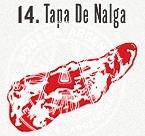 14. Tapa de Nalga / Topside Cap
14. Tapa de Nalga / Topside Cap
These various cuts are fairly tough and better left for a slow cooking pot than any parrilla.
ACHURAS / OFFAL
I've added a few extra favourites that aren't on our cow jigsaw but are on the menu and should not be missed.
 Chorizo / Sausage
Chorizo / Sausage
Moist, fatty, meaty. A good chori is a total pleasure. Shove it in a bread roll and it becomes the humble feast of kings known as the choripán from the chori-zo (sausage) and pan (bread). Pile on the typical local spicy chimichurri sauce and you're good to go.
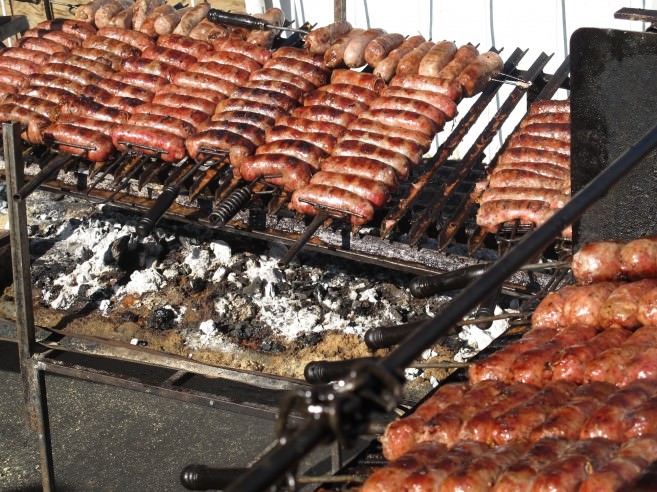
Chori anyone? Giant parrillas at Feria de Mataderos, a weekend gaucho folk market an hour from the centre of Buenos Aires; photo by Sonja D'cruze.
Morcilla / Blood Sausage
You're gonna love 'em or hate 'em. Similar to black-pudding in the UK, they are made up of pig's blood and ground up pieces of pork or offal and a few extra spices to make them taste less like pig's blood. A much softer sausage than the chorizo.
Pamplona
No translation exists for this typical Uruguayan meat feast of veal, chicken or pork enveloped around a stick of cheese wrapped in ham and topped off with tomatoes, pancetta and peppers. If you want a heart attack on a plate, youʼve found it! For some of the best head to El Pobre Luis in Belgrano.
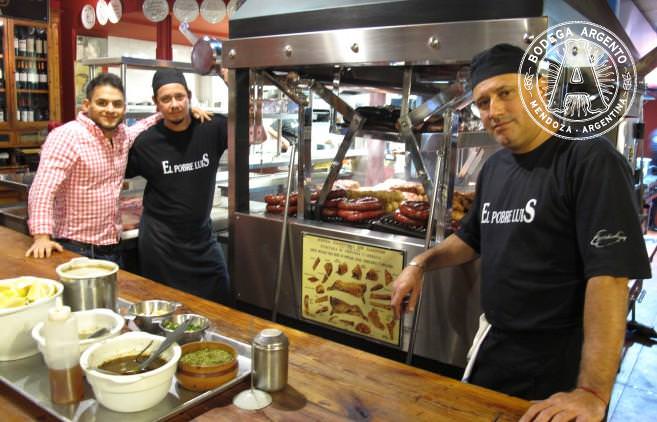
The proud parrilleros of El Pobre Luis stand in front of a loaded parrilla alongside Liber Acuna (far left), the son of founder, Luis. The parrilleros butcher the meat themselves and say it takes years of training; photo by Sonja D'cruze.
 Mollejas / Sweetbreads or Thymus Glands
Mollejas / Sweetbreads or Thymus Glands
Not for the squeamish, mollejas' unique gusto comes down to them being glands and not muscle tissue. Soft and delicate in texture, resembling pork on the taste buds.
 Chinchulin / Small Intestines
Chinchulin / Small Intestines
As you'd expect, it looks gross and tastes…well it's pretty particular and hard to describe so you're just gonna have to trust me and try them. They should be well cooked and crunchy but never chewy, that means you got a dud plate. Squeeze abundant amounts of fresh lemon juice on top.
How to ask for the perfectly cooked steak
Weirdly, in a country where cow is king, it perturbs me that most locals, gauchos and all, run for the hills at the sight of pink meat. Me, Iʼm a bit more of the opinion that if an animal has died for my appetite, it should be served practically still flipping on the plate. Nothingʼs sadder than an overcooked steak. To avoid that happening…hereʼs your true and tested guide to ordering it the way you like it.
VUELTA VUELTA : The meat has barely kissed the pan. Nice and blue and bloody.
JUGOSO : Officially this means medium-rare in Argentina, but it tends to be more on the medium side for most parrilleros (the grill chefs).
A PUNTO : Medium, still a bit pink in the middle but not so juicy.
PASADO DE PUNTO : Medium to well done.
COCIDO : Well done. Well dead.
BIEN COCIDO : Why would you? But plenty of Argentineans do.
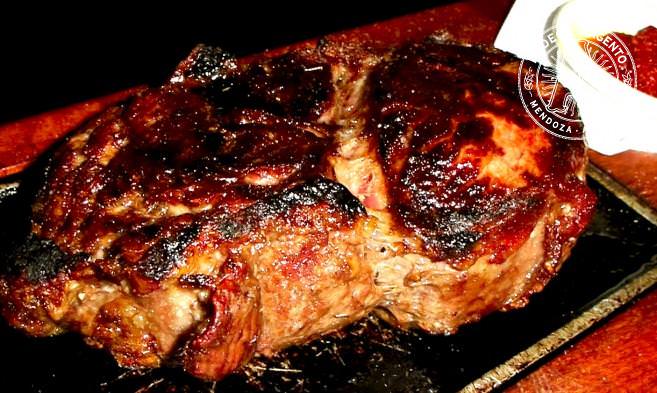
Get ready to indulge in some serious, succulent, super-size steaks; photo by Sonja D'Cruze.
The following two tabs change content below.
- Bio
- Latest Posts
![]()
Sonja is a freelance journalist who studied at the London College of Communication. After working as a radio producer for the BBC, she got a ticket to carnival in Rio de Janeiro and then made her way on many a long bus to Buenos Aires. She stayed, lured by a love of porteño life and its Castellano speaking people. The city still surprises and she's not done with it yet, always on the hunt to uncover something creative, beautiful, tasty or just plain weird, behind one of BA's many unassuming doors. She writes, dabbles in tango, loves yoga and longs to be good at playing the trumpet.
![]()
Source: https://therealargentina.com/en/a-meat-lovers-guide-to-beef-cuts-in-argentina/
0 Response to "Beef Loin Flap Where Part Cow Vacio"
Publicar un comentario